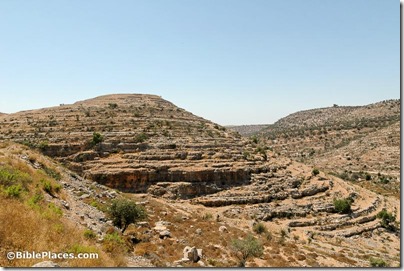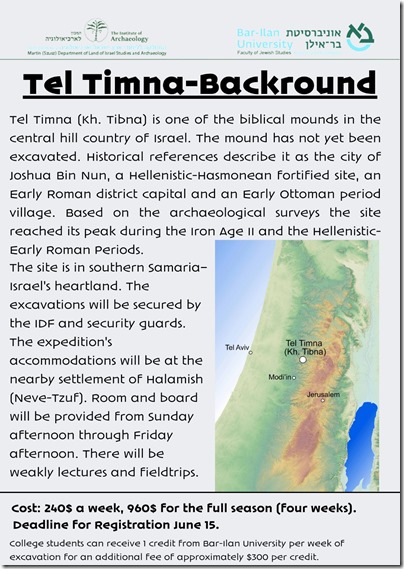There’s a brand new excavation opportunity this summer at a site usually identified with Joshua’s hometown of Timnath Heres. The site of Kh. Tibna/Tel Timna has never before been excavated, and this July Dvir Raviv and Avraham Tendler of Bar Ilan University are launching an excavation and survey project in the western hill country of Ephraim.
I’m not sure if I can explain it, but I’ve long had a special attraction toward this site. Perhaps it is related to its beautiful location in the hills that enjoy the afternoon breezes from the Mediterranean. Perhaps it is owing to its remoteness—I have only visited once, and I don’t remember any of my friends or colleagues telling me that they had traveled there. Perhaps it is the fact that of all the places that Joshua could have chosen as his inheritance as one of the two faithful spies, he chose this site to spend his remaining years after the conquest (Josh 19:49-50).
Kh. Tibna, possibly biblical Timnath Heres
In any case, this summer is the first time that an archaeological spade will begin revealing the secrets of the site. Initial surveys indicate that the city was particularly important during the Iron Age II and the Early Roman periods. There is evidence of a Hellenistic-Hasmonean fortress, and the site may have been a regional capital in the time of Jesus.
The excavation runs from July 24 to August 19, and university credit is available for those interested. The cost of participating ($240/week) is much lower than at many other excavations ($500-$1000/week). They are also offering weekly lectures and fieldtrips. This might be the opportunity you’ve been looking for.
The expedition’s Facebook page is mostly in Hebrew, but you can see some photos there. See the graphic below for contact addresses.


